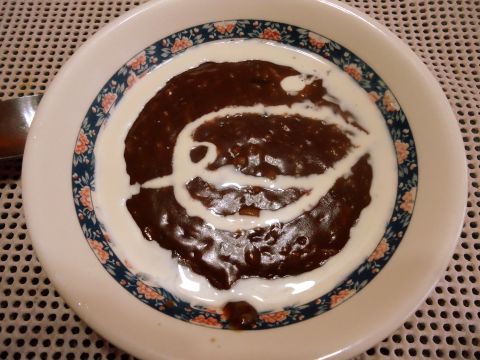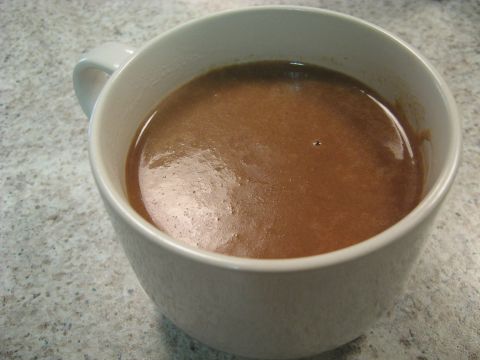Champurrado to Champorado: Understanding cross-border connections through my childhood
Pictured in the first photograph is pictured the champorado, a Filipino dessert dish made of sticky rice and tablea (tablets of ground roasted cocoa beans) and topped with milk and sugar. The champorado is often served for breakfast or merienda (afternoon tea), and is served alongside dried fish as a salty balance to the dessert’s sweetness.
In the second photograph is the similarly-named Mexican beverage/dessert known as champurrado, which is made of chocolate and atole (a drink mixture made of water, masa (corn flour), sugar, cinnamon, and vanilla). Similar to the champorado, the champurrado is often served with churros (a salty fried dough snack) for breakfast or merienda.
Looking at both of the names, a quick glance would suggest some sort of connection between the two, and was a topic of confusion growing up as I attended a Spanish class that had Mexican foods to try out, and wondering why the champorado that I had grown up with was in a cup instead of a plate, and tasted nothing like what I had eaten on many cold & rainy days.
Champurrado as a dish is native to Mexico, and according to food historian Doreen Fernandez (1934-2002) in her 1994 book Tikim: Essays on Filipino Food and Culture, its arrival in the Philippines was a byproduct of the Manila galleons arriving to the archipelago with cocoa and chocolate, following colonization by the Spanish. The arrival of cocoa and chocolate from the Spanish would popularize the Mexican dessert among the Filipino elite, but over time champurrado would become champorado as ingredients more accessible to the common folk were substituted in, such as the switching out of masa in favor of rice (itself an ingredient whose commodification by Spain resulted in greater accessibility to the average Filipino). These days, the two dishes share two commonalities: the presence of sugar (which was brought back to Europe through Southeast Asia) and the consideration of both dishes as traditional staples of each culture.
Other forms of cross-cultural exchange exist between Mexico and the Philippines because of Spanish imperialism, but both champurrado and champorado raise the question of appropriation and ownership: with cacao and the techniques in making champurrado being adopted by Filipinos, and ingredients native to Southeast Asia like sugar being a part of the drink, should they be seen as one dish appropriated by one culture or two separate dishes altogether? At the same time, how should one address instances like this (food or otherwise) where the distinctions are even more blurred such as regional variations? Do certain cultures have the right to claim ownership when the circumstances that allowed these connections to flourish are not necessarily an unequal power dynamic?
Merienda refers to afternoon tea in Spanish, and has been adopted into the Filipino language in a similar form, also referring to the period between breakfast and lunch
Tablea is a Filipinization of the Spanish word Tablía, meaning ‘tablet’
Tikim means ‘taste’ in Filipino, often used when describing a dish or is the act of trying out a dish itself
Title: Champurrado
Author: Kimberly Vardeman
Date: January 02, 2009
Source: Wikimedia Commons (taken from flickr.com/photos/kimberlykv/3163342855/)
Title: Champorado
Author: Josh James
Date: July 27, 2011
Source: Wikimedia Commons (taken from flickr.com/photos/joshwept/5996431952/)
Reference:
Tikim: Essays on Filipino Food and Culture by Doreen G. Fernandez (1994, reprinted in 2019)
Philippines

